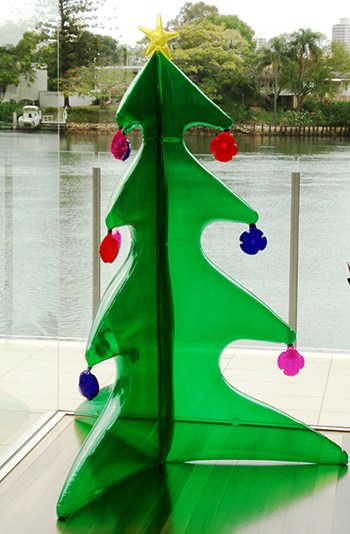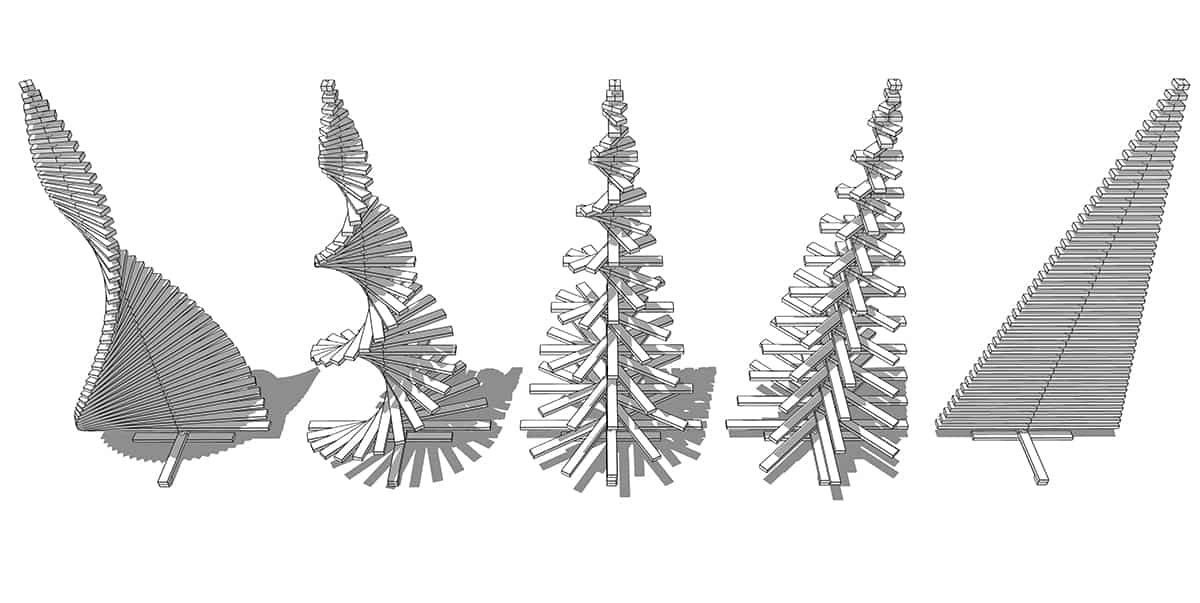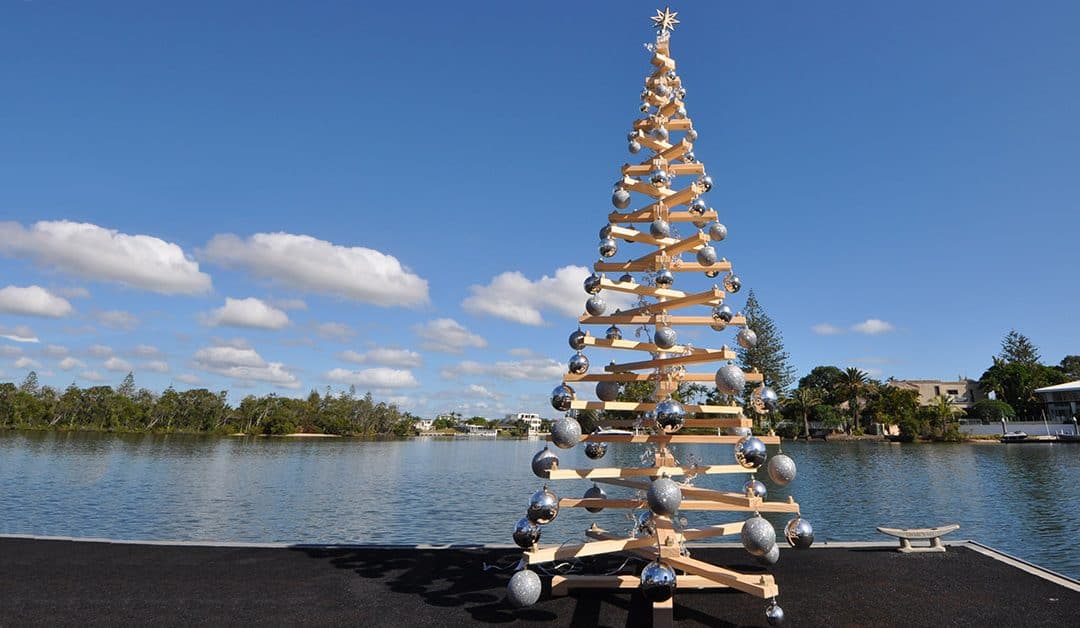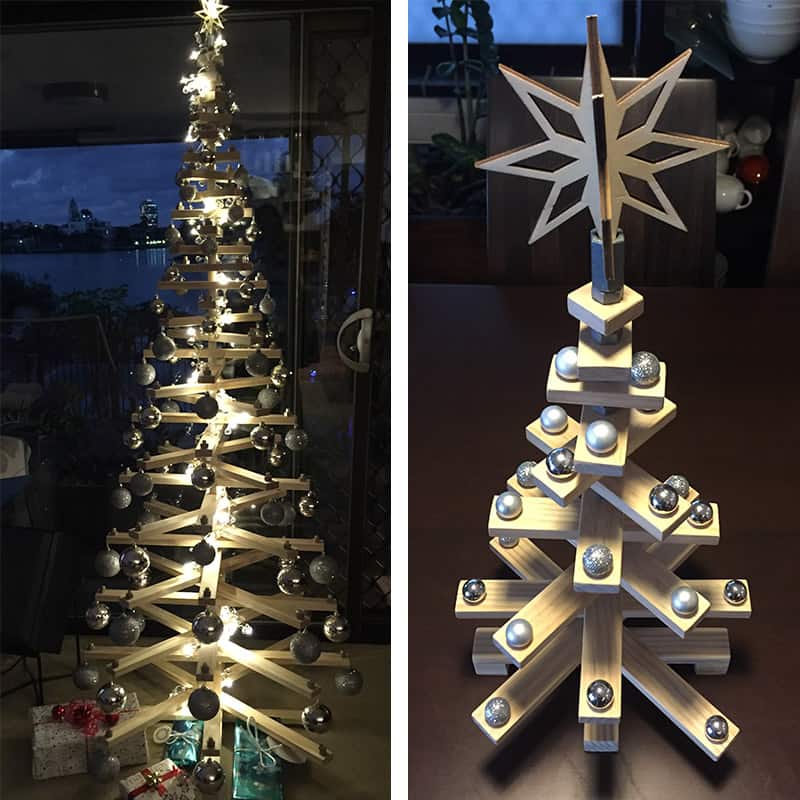So began the online search for a worthy replacement.
As an Architect I wasn’t interested in the ubiquitous imitation pine tree, but was seeking a stylistic contemporary representation of a tree, one that would be more culturally appropriate for use at Christmas in Australia which coincides with our sweltering summer season.
After much searching I did find several designs that I liked, however they were exorbitantly priced, more that I could justify spending on a temporary decoration, even at Christmas time.


As an Architect I wasn’t interested in the ubiquitous imitation pine tree, but was seeking a stylistic contemporary representation of a tree, one that would be more culturally appropriate for use at Christmas in Australia which coincides with our sweltering summer season.
After much searching I did find several designs that I liked, however they were exorbitantly priced, more than I could justify spending on a temporary decoration, even at Christmas time.
Initially I toyed with the idea of creating suspended tapered coloured acrylic hoops, but soon realised that I didn’t have the appropriate tools for working with that material. Then it occurred to me, why not use timber, specifically pine. Real Christmas trees are pines synonymous with the arctic, contemporary Scandinavian furniture utilises pine and other blonde timbers, its economical, readily available, and easy to work with. Bingo!
The next step was to develop the concept which resulted in a series of horizontal branches of varying lengths supported from a central trunk that could be rotated to create numerous representative interpretations of a pine tree.

Then began the task of sourcing the necessary materials, most of which are readily available in any large hardware outlet.
The central trunk / spine utilises a threaded M10 tie down rod, with a lock nut to the base, and an M10 connector nut to the top (this allows a recess to fit a star at the top).
The support base and branches are created from 42mm x 19mm dressed pine, cut to varying lengths. For the 1.8m tall tree illustrated, the base consists of a 600mm length with single 42mm x 42mm feet glued on at each end, and a 700mm length above with double feet fitted. This raises the base from the floor allowing clearance for the M10 lock nut under the spine. It also allows the 2 base pieces to align when flatpacking.
The lowest branch starts at 820mm long, with each consecutive branch being cut 20mm shorter. Drill a 10mm hole in the centre of each branch, and optional 10mm holes at each end to take a 10mm pine dowel for hanging decorations.
I slot an M10 Hex nut over the dowel as a modern interpretation of a pine cone to add more of a decorative touch.
Once the base and all the branches are cut to size, it’s a simple matter of sleeving them consecutively over the threaded rod and inserting a 20mm diameter 20 – 25mm high spacer between each branch.
I sourced white PVC M10 spacers online, however you could just as easily use washers, nuts or round timber dowels cut and drilled from longer poles.
When assembled, fit the connector nut to the top and tighten, spin the branches to create your desired pattern. Job done, ready to decorate!
The same design principles can be applied to create trees of any height to suit your preferences and space requirements.
I built a smaller 600mm high table top version, using smaller 30mm x 12mm timber for branches and base.
Beware, once your friends see your new tree, they’ll be begging you to make one for them as well. Instead, simply refer them to this site, and enjoy yourself a very Merry Christmas on behalf of Lea Design Studio!
The same design principles can be applied to create trees of any height to suit your preferences and space requirements.
I built a smaller 600mm high table top version, using smaller 30mm x 12mm timber for branches and base.
Beware, once your friends see your new tree, they’ll be begging you to make one for them as well. Instead, simply refer them to this site, and enjoy yourself a very Merry Christmas on behalf of Lea Design Studio!












